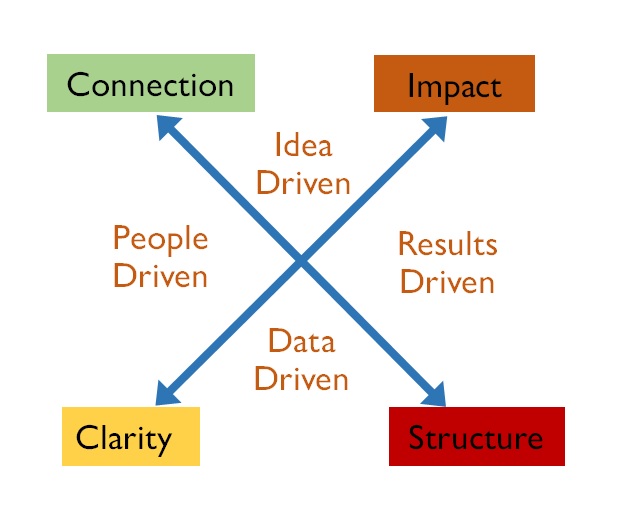
You Were Asked To Be More Strategic, Now What?
Engineering and STEM Leaders often receive this feedback, “you need to be more strategic,” when they are passed up for a promotion. Yet, they have minimal idea of what that would look like for their context. I shed some light on what it means to be strategic and improve our strategic thinking while staying true to our authentic selves.
What Does Strategy Mean
This article, Strategy versus tactics: the difference is execution, defined it as
A strategy is your overarching plan for achieving your goals, but it doesn’t get bogged down in specifics. You can think of this as your compass, guiding your organization toward your objective. On the other hand, tactics are actionable, measurable decisions that allow your teams to deliver on your strategy. Rather than acting as a general compass, tactics create a roadmap for success that anyone can follow.
Imagine if MLK had said, “On such a date, I will have a march with x number of people.” How many would have joined him that day? Instead, “I have a dream” touched millions of hearts; inspired them to act. Because of that, they took tactical actions that were specific, attainable, measurable, time-bound, and relevant. His compelling vision and his strategy of non-violent protest drove the tactical steps.
Here is an example from our everyday life. When you think of taking a trip, you don’t start deciding whether to call an Uber, take a bus, or rent a car. Instead, you start with the purpose of the trip and then maybe the destination and the timeframe. Later, you come to the trip planning details to even delegate part of it. In a nutshell, you start with a strategy before thinking about the tactical aspect.
Individual Examples
This client was a mid-level individual contributor at a big tech company. When her manager asked her to do something, she focused on getting it done well by the deadline, and she felt accomplished when she was able to do that. As her coaching goal was to be more strategic, I challenged her to find out how those tasks fit the bigger picture, connecting them with the team’s success. But she was concerned that if she “questioned,” she might look incompetent or not loyal enough. So she and I brainstormed to create a psychologically safer way. If you are paying attention, you may notice that her inner belief about asking questions undermined the authority rather than being curious and engaged.
Another client, Tom, was frustrated by his manager asking to do more while not getting the recognition he wanted. I helped Tom do a vision exercise and connect his work with the bigger goals – both his and his team’s. When he saw the alignment, he got motivated and thoughtful about where he focused in his day-to-day work. Instead of “doing more,” he created relevant results with less confusion and stress.
We all have strategic and tactical thinking capabilities in us. But more often, the tech and STEM background leaders are used to taking actionable and concrete steps to solve problems. Sometimes their bias to execution and the discomfort in staying high level could be seen as their lack of strategic thinking.
The Downside of Being Overly Tactical
Tactical is helpful, but it could be detrimental when it becomes a crutch to avoid a deep-rooted question or be uncomfortable in not knowing “everything.” Sometimes when feeling stressed, we tend to do things we already know rather than think creatively.
Acting without an overarching strategy may create busyness without a meaningful result causing more dissatisfaction and disappointments.
Our Personality Traits Could be at Play
We all have these four major character patterns, and we usually tilt (sometimes as an unconscious bias) towards one. When we are balanced, we consciously choose the tilt based on the context. The four patterns are:
Impact – Good with Ideas and futuristic thinking.
Structure – Cares about precise data and efficient processes.
Clarity – Enjoys research and investigation, connecting people and data.
Connection – Socializing and storytelling around people invigorate them.

Those in the Structure or Clarity Tilts usually have difficulty thinking broader without knowing all the details. Awareness about their Tilt helps them see the possibilities of consciously shifting towards the Impact tilt based on the context. It is important to note that no one tilt is better than the other; we need all of them to be effective.
How To Shift To be More Strategic
This HBR article suggested these four ways.
- Know – Observe and Seek Trends :
Routinely explore the internal trends in your daily work, like issues that come up repeatedly. - Think – Ask the Tough Questions :
“What does success look like in Year 1? What could impact the outcome in a negative way? What are the early signs of success or failure?” - Speak – Sound Strategic :
Structure your written and verbal communication in a way that helps your audience focus on the core message. Group and logically order your main points and keep them as succinct as possible. - Act – Make Time for Thinking and Embrace Conflict :
Make time in your busy schedule for reflection. Stop going to meetings you don’t need to attend, and block out thinking time on your calendar. At first, you may feel disoriented as you challenge your own assumptions and gain comfort with conflict and curiosity, but when you’re able to contribute at a higher level, you’ll be glad you took the risk
Bottom-line
We all can be a little more strategic, and It is not a binary state. To some extent, we do that as adults as we live our life. The goal is to make a conscious shift when the situation wants us to be. If you don’t know where to begin, start logging your significant thoughts/conversations at the end of the day and week and see where you spent more time – for strategy or tactics.
Related: The Fuel of a Good Goal Is a Compelling Vision: 4 Ways to Craft, HBR Article: How To Become A Strategic Thinker
The featured image is from pixabay.com



